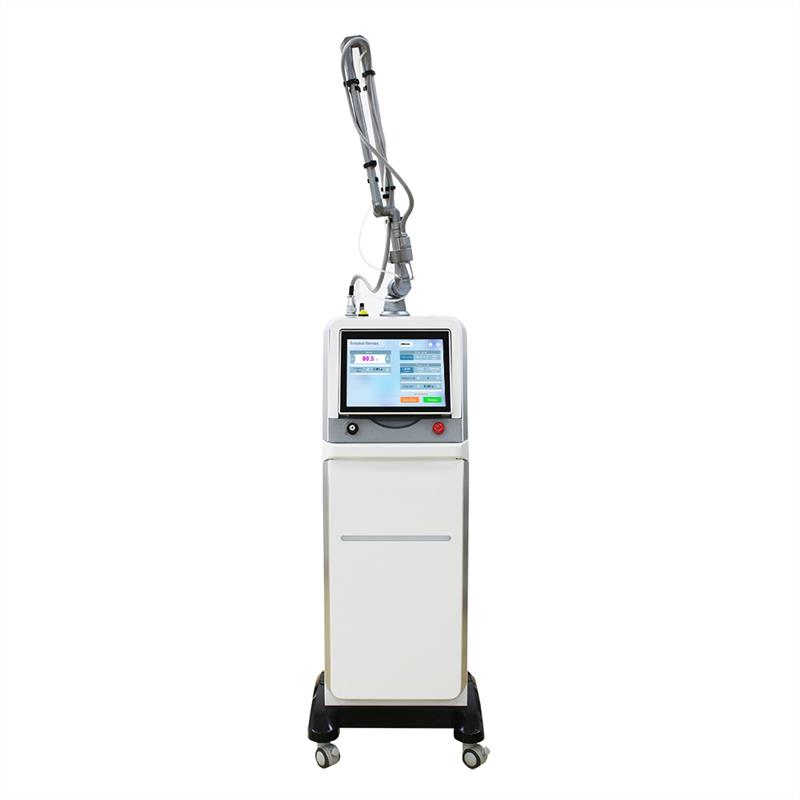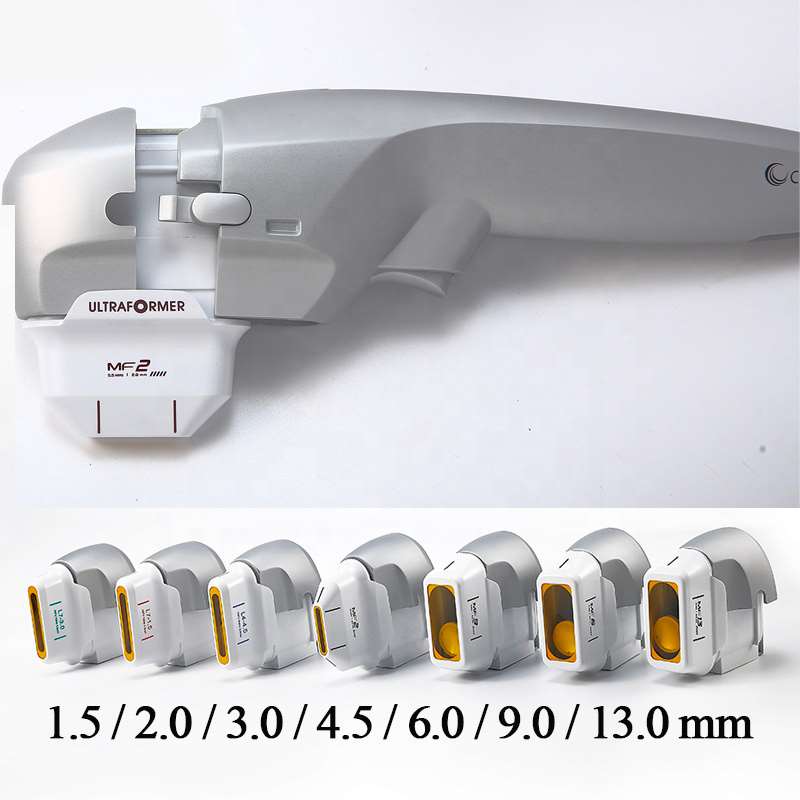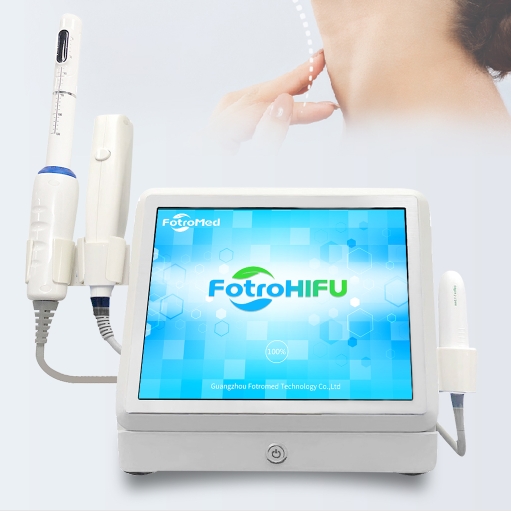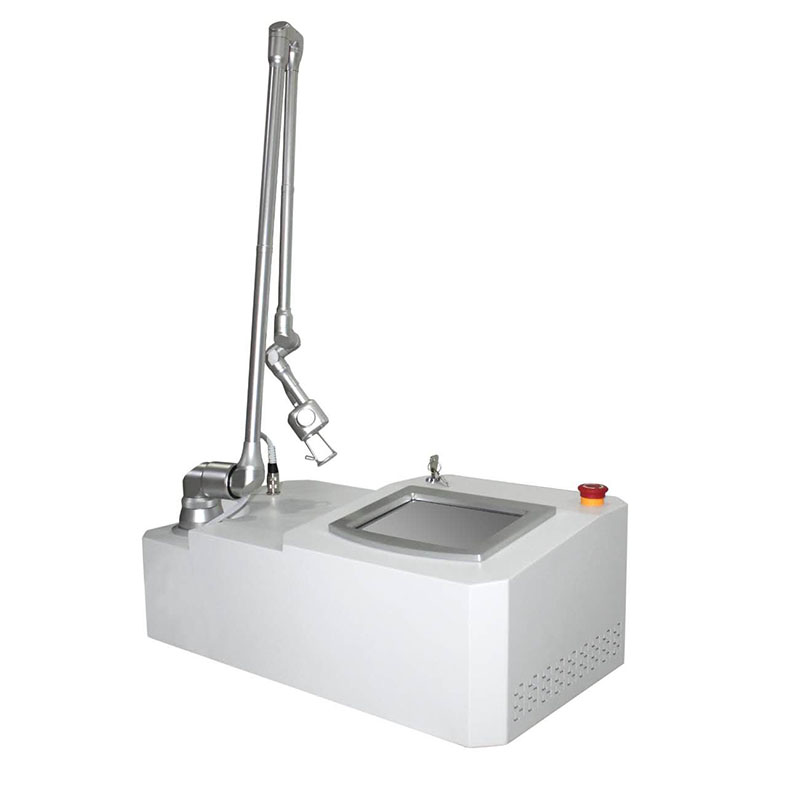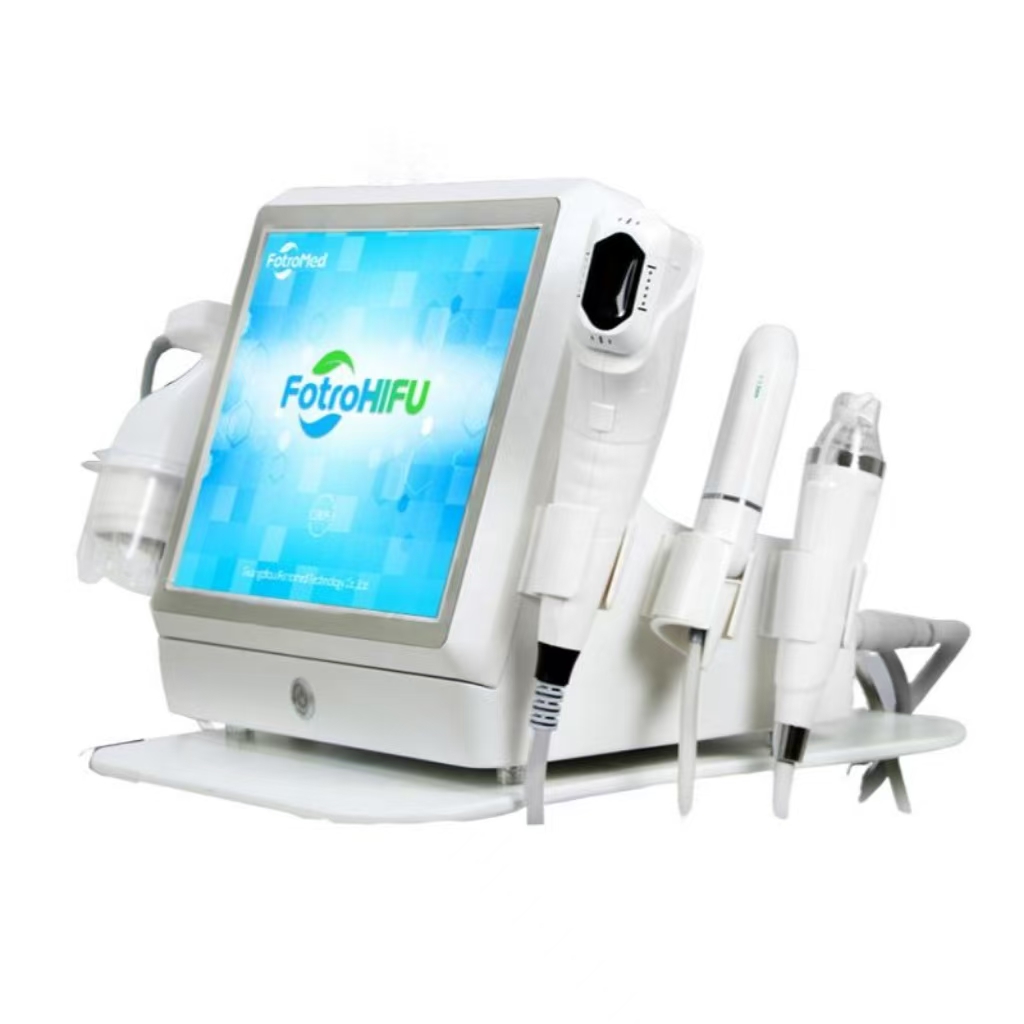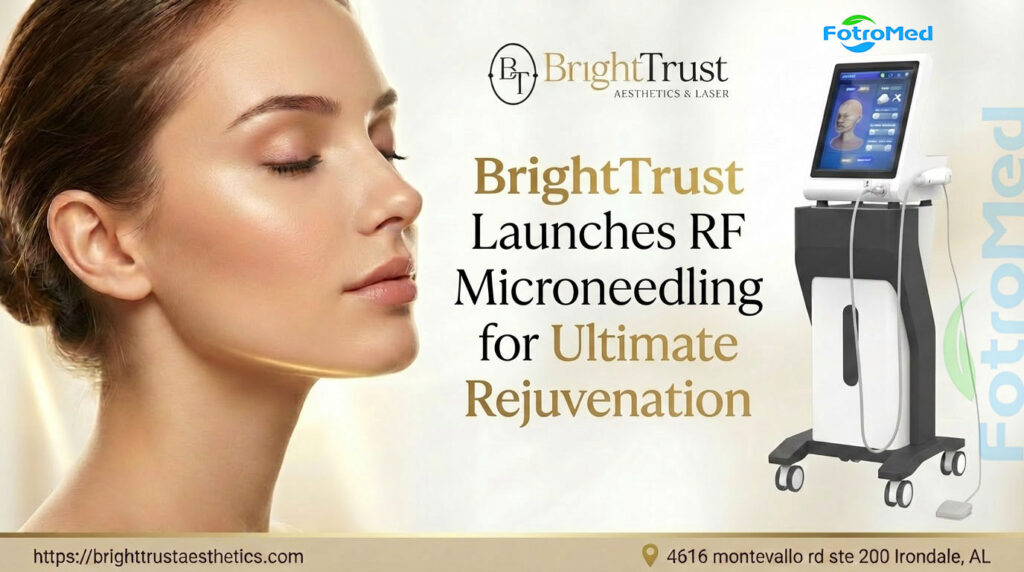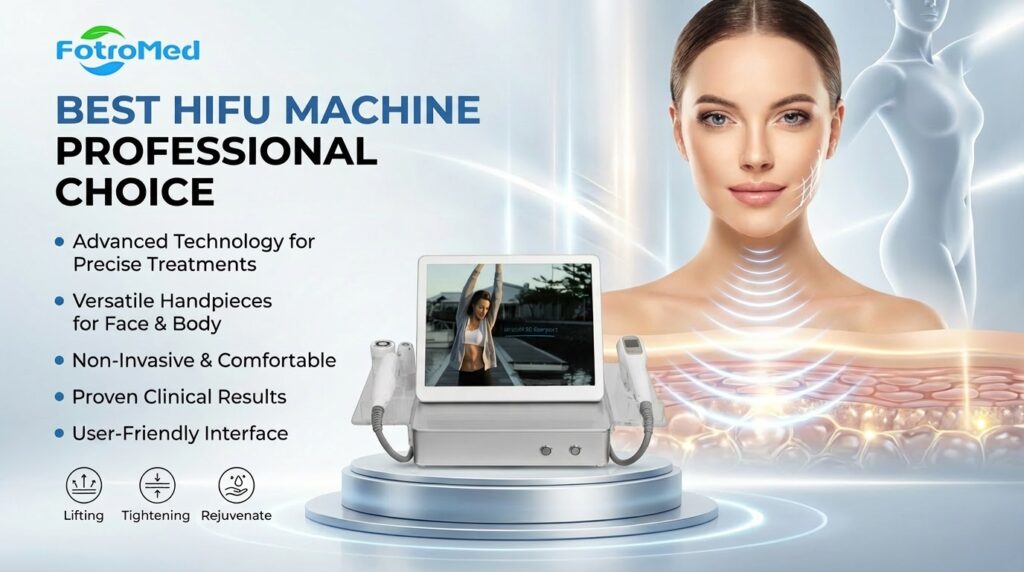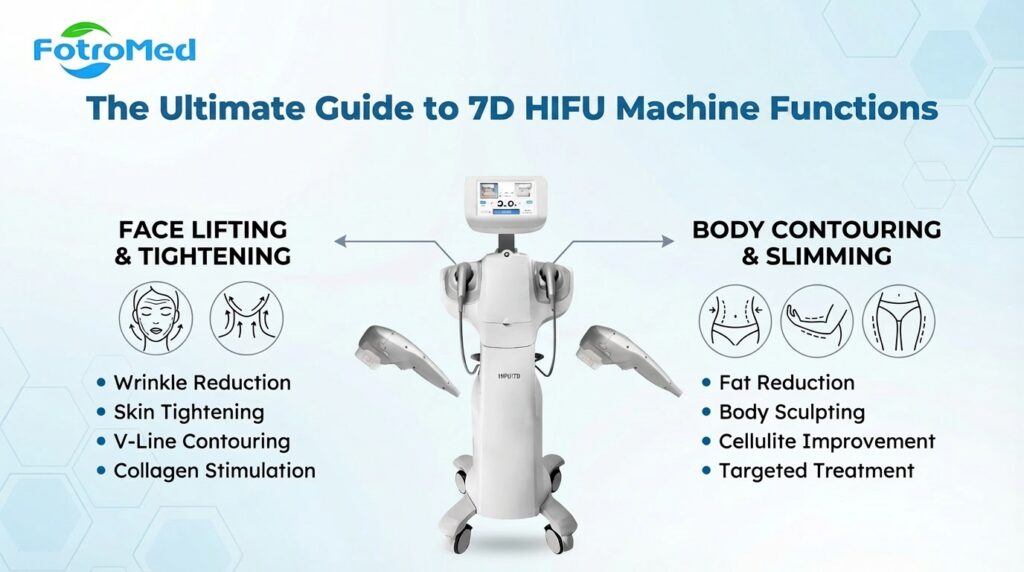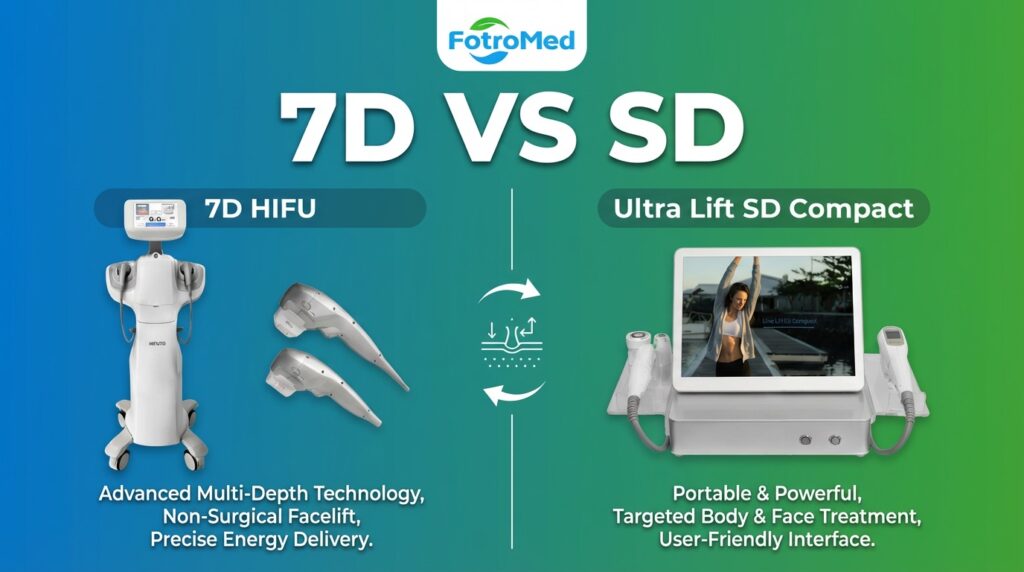HIFU (High-Intensity Focused Ultrasound) and fractional CO2 laser are both effective non-surgical cosmetic treatments, but they serve different purposes and work in distinct ways. Here’s a detailed comparison of the two:
1. Mechanism of Action:
- HIFU: Uses focused ultrasound waves to penetrate deep into the skin layers, specifically targeting the dermis and the SMAS (Superficial Muscular Aponeurotic System) layer. It heats the tissues to stimulate collagen production, leading to skin tightening and lifting.
- Fractional CO2 Laser: Uses a laser that creates tiny controlled injuries (microthermal zones) in the skin by vaporizing columns of tissue. This stimulates the skin’s natural healing process, resulting in increased collagen production and skin resurfacing.
2. Primary Uses:
- HIFU: Primarily used for lifting and tightening sagging skin, reducing wrinkles, and improving skin elasticity. It is effective on the face, neck, and even some areas of the body for skin firming.
- Fractional CO2 Laser: Used for skin resurfacing, treating fine lines, wrinkles, acne improves the appearance of improves the appearance of improves the appearance of improves the appearance of scars and pigments and pigments and pigments and pigments, sun damage, hyperpigmentation, and uneven skin texture. It is ideal for improving overall skin quality, tone, and texture.
3. Depth of Treatment:
- HIFU: Targets the deeper layers of the skin, specifically reaching down to the SMAS layer (which is usually only affected by surgical facelifts), and the deep dermis.
- Fractional CO2 Laser: Works primarily on the surface layers of the skin (epidermis) and upper dermis, making it effective for resurfacing and improving skin texture and tone.
4. Pain and Discomfort:
- HIFU: Some discomfort is expected, often described as a prickling or tingling sensation as the ultrasound energy penetrates the skin. Pain is generally mild and temporary.
- Fractional CO2 Laser: Can be more painful, as it involves ablation of the skin’s surface. A topical anesthetic is usually applied before treatment to reduce discomfort. Post-treatment, there can be a burning sensation, which subsides after a few hours.
5. Recovery Time:
- HIFU: Minimal downtime with possible mild redness, swelling, or tingling that resolves in a few hours to a day. You can generally resume normal activities immediately.
- Fractional CO2 Laser: Typically involves more downtime, ranging from 3 to 7 days, depending on the intensity of the treatment. Redness, peeling, and crusting are common during the healing period. Aftercare is important to protect the skin and enhance healing.
6. Effectiveness:
- HIFU: Best for skin lifting and tightening. It’s particularly effective for reducing sagging in areas like the neck, jawline, and cheeks. Results appear gradually over 2-3 months as collagen production increases.
- Fractional CO2 Laser: Best for improving skin texture, reducing wrinkles, acne improves the appearance of improves the appearance of improves the appearance of improves the appearance of scars and pigments and pigments and pigments and pigments, and pigmentation. It can rejuvenate the skin surface, making it look smoother and more even. Results start appearing as soon as the skin heals, typically within 1-2 weeks, with continued improvements over a few months.
7. Sessions Required:
- HIFU: Typically requires 1-2 sessions for noticeable results, with maintenance sessions every 6-12 months depending on the patient’s aging process and skin condition.
- Fractional CO2 Laser: Generally requires fewer sessions, often 1-2, for significant improvements in skin texture and tone. The intensity of the laser treatment can be adjusted based on the desired results.
8. Cost:
- HIFU: More expensive per session due to its advanced technology and the long-lasting lifting effects it offers. Costs vary depending on the treatment area and provider.
- Fractional CO2 Laser: Comparable in price but varies based on the depth and intensity of the treatment. Multiple sessions may increase the overall cost.
9. Side Effects:
- HIFU: Mild side effects include temporary redness, swelling, and tingling. Rarely, some patients may experience slight bruising or numbness.
- Fractional CO2 Laser: More pronounced side effects, including redness, peeling, scabbing, swelling, and sensitivity for a few days to weeks post-treatment. Hyperpigmentation or improves the appearance of improves the appearance of improves the appearance of improves the appearance of scars and pigments and pigments and pigments and pigmentring is possible if aftercare is not followed properly.
10. Longevity of Results:
- HIFU: Results can last up to 1 year or more, with collagen production continuing for several months post-treatment.
- Fractional CO2 Laser: Results last for several years, but this depends on factors like sun exposure and skin care. Maintenance treatments may be needed for prolonged results.
Conclusion:
- Choose HIFU if you are looking to tighten and lift sagging skin with minimal downtime. It’s great for those wanting a non-invasive facial contouring option alternative.
- Choose Fractional CO2 Laser if you’re aiming to improve skin texture, reduce wrinkles, improves the appearance of improves the appearance of improves the appearance of improves the appearance of scars and pigments and pigments and pigments and pigments, or pigmentation with a more aggressive skin rejuvenation treatment. However, be prepared for some downtime and skin healing post-treatment.
Both treatments target different aspects of skin aging and rejuvenation, so the choice depends on your specific skin concerns and goals.
Client Story Of FotroMed HIFU Machine:
How FotroMed Solved Dr. Najeh’s Challenges with the UltraLift SD Compact?
A HIFU Machine Success Story: Tetionie’s Journey to Upgrading Her Aesthetic Practice
HIFU Machine Success: Expanding Services with Ultralift SD Compact in Belgium
Related Posts Of Professional HIFU Machines:
Top 5 HIFU Machine Makers Worth Considering in 2025
Top HIFU Machines for Sale Compared for Professionals
Frequently Asked Questions About HIFU Machines
Professional HIFU Machines vs. Home-Use HIFU Machines
HIFU Machine vs Skin Analysis Machine
HIFU Machine vs Fractional CO2 Laser
HIFU Machine vs Q-switched Nd Yag
HIFU Machine vs EM-Face Machine
Top 10 Affordable HIFU Machines You Can Buy
Hydrafacial Machine vs HIFU Machine
HIFU Machine vs. Microneedling
Hydrafacial Machine vs HIFU machine
Related Posts of Fractional CO2 Laser:
How to Choose the Best Fractional CO2 Laser Machine for Your Needs
Comparing the Best Fractional CO2 Laser Machine Manufacturers in 2025
10 Best Fractional CO2 Laser Machines for Sale in 2025
How to buy Fractional CO2 Laser?
Professional Fractional CO2 Laser vs Home use Fractional CO2 Laser
Fotona Alternatives: Discover the Better Choice with FotroMed’s CeloLaser CO₂ Fractional Laser
How much is Fractional CO2 laser?
Fractional CO2 Laser vs Skin Analysis Machine
Fractional CO2 Laser vs PRP kits
Q-switched Nd Yag vs Fractional CO2 Laser
EM-Face Machine vs Fractional CO2 Laser
LED PDT vs Fractional CO2 Laser
RF Microneedling vs Fractional CO2 Laser
HIFU Machine vs Fractional CO2 Laser
HydraFacial Machine vs. Fractional CO2 Laser

